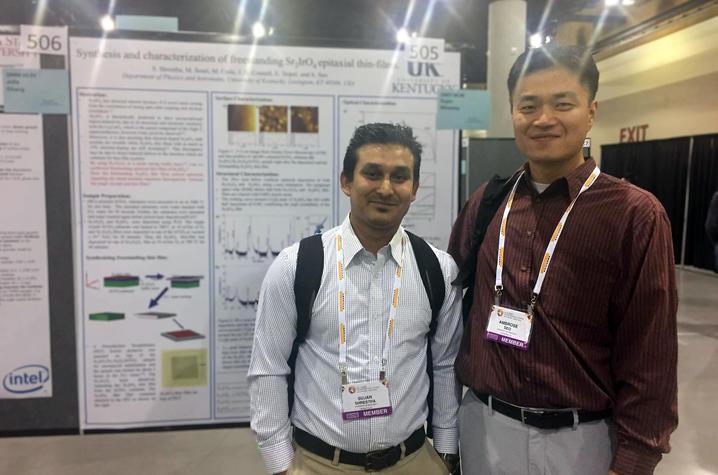
LEXINGTON, Ky. (May 15, 2025) — A new study by University of Kentucky researchers is helping change how scientists understand and control magnetic energy and could lead to faster, more efficient electronic devices.
Led by Ambrose Seo, Ph.D., a professor in the University of Kentucky Department of Physics and Astronomy in the College of Arts and Sciences, the study recently was published in Nature Communications. Seo is also the principal investigator of the three-year, $365,000 grant from the U.S. National Science Foundation that supported this work.
The research focuses on magnons — tiny waves that carry magnetic energy through materials.
“You can imagine magnons as groups of electrons ‘dancing’ together within a magnet,” Seo said. “When electrons ‘dance’ in a coordinated manner, their movements create waves called magnons.”
Scientists have been exploring how to control magnons, which could play a big role in future technologies like ultra-fast computers and energy-efficient electronics. But that control has proven difficult — until now.
Seo and his team tackled the challenge using a special material called strontium iridium oxide, known for its unusual magnetic behavior. They discovered that placing this material next to certain metals or insulating layers caused the magnons to change by becoming “softer,” meaning they required less energy to move.
“Put simply, the electrons changed their ‘dance steps’ depending on who was next to them,” Seo said.
The team says this phenomenon occurred because magnons interact with vibrations in the material’s structure — similar to how sound waves travel through air. By better understanding and controlling these interactions, scientists could develop new ways to manage magnetic energy in various materials — a key step toward next-generation electronic devices.
This could lead to faster data processing, reduced energy consumption and longer battery life for everyday electronics such as smartphones, computers and wearable devices.
“Ultimately, this research could pave the way for faster, more efficient electronic devices by harnessing these dancing electron spin waves,” Seo said.
Read the full study in Nature Communications.
In addition to Seo, the research team includes Sujan Shrestha, Ph.D., first author and 2023 UK graduate; and Maryam Souri, Ph.D., a 2018 UK graduate.
Research reported in this publication was supported by the U.S. National Science Foundation under Award No. 2104296. The opinions, findings and conclusions or recommendations expressed are those of the author(s) and do not necessarily reflect the views of the U.S. National Science Foundation.
